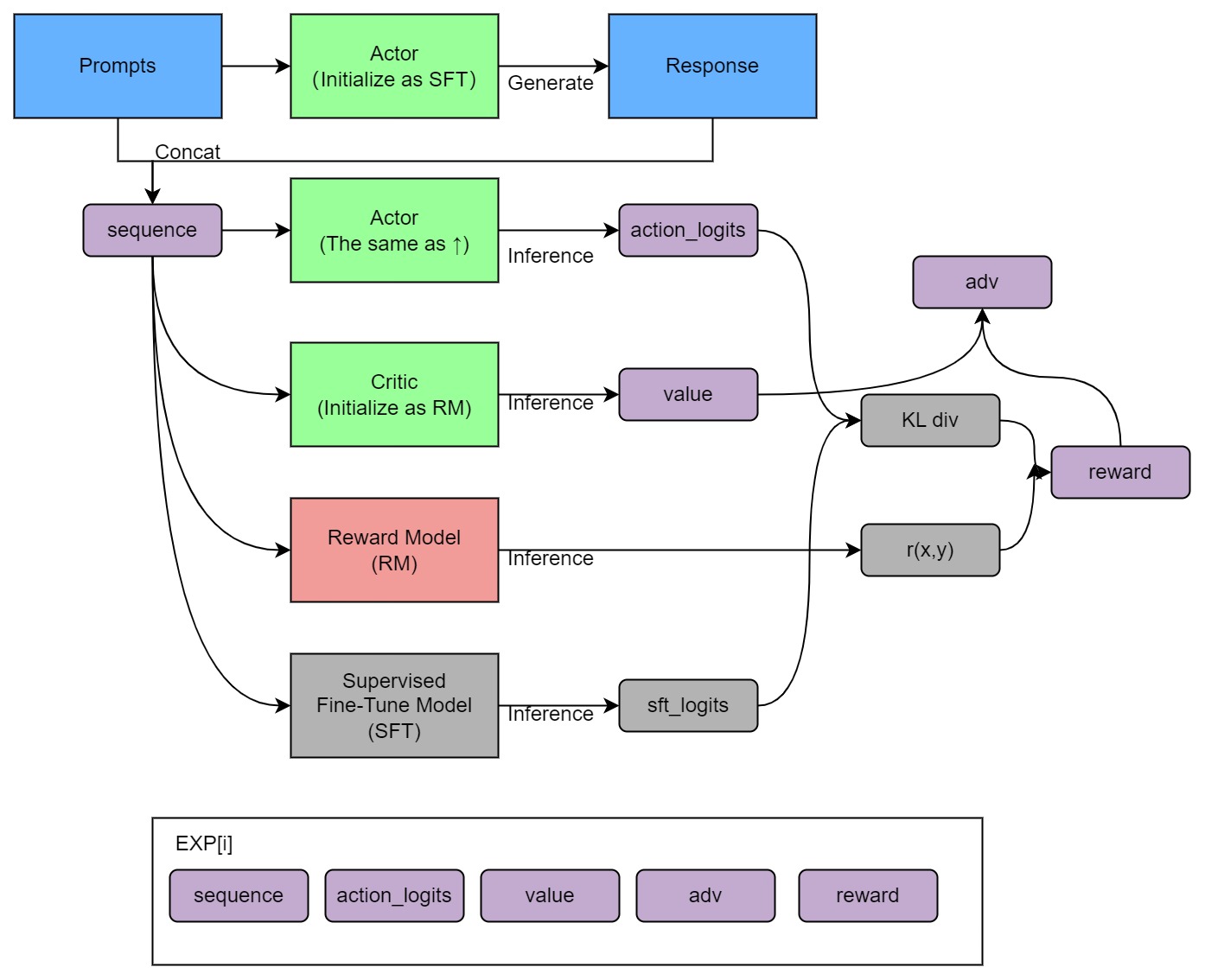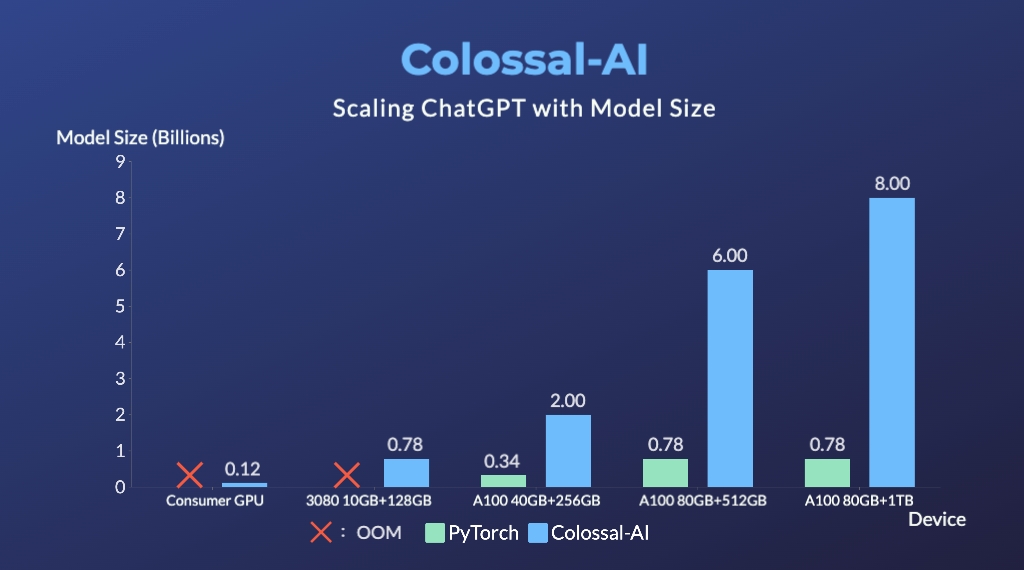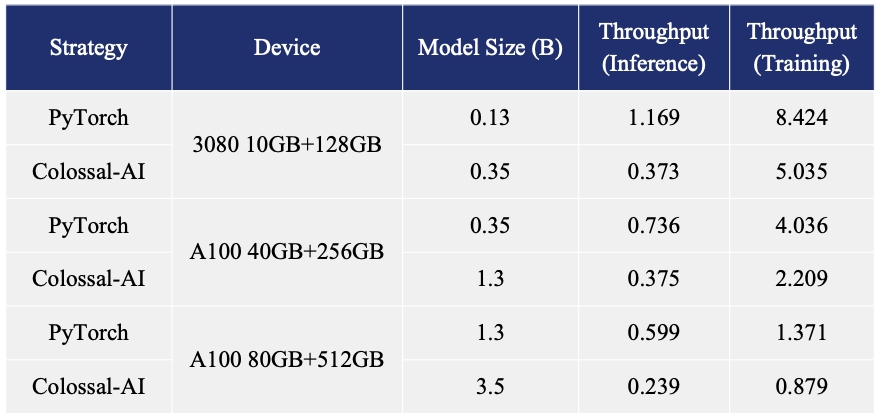mirror of https://github.com/hpcaitech/ColossalAI
|
|
||
|---|---|---|
| .. | ||
| benchmarks | ||
| chatgpt | ||
| examples | ||
| tests | ||
| .gitignore | ||
| LICENSE | ||
| README.md | ||
| pytest.ini | ||
| requirements-test.txt | ||
| requirements.txt | ||
| setup.py | ||
| version.txt | ||
README.md
RLHF - Colossal-AI
Implementation of RLHF (Reinforcement Learning with Human Feedback) powered by Colossal-AI. It supports distributed training and offloading, which can fit extremly large models. More details can be found in the blog.

Training process (step 3)


Install
pip install .
Usage
The main entrypoint is Trainer. We only support PPO trainer now. We support many training strategies:
- NaiveStrategy: simplest strategy. Train on single GPU.
- DDPStrategy: use
torch.nn.parallel.DistributedDataParallel. Train on multi GPUs. - ColossalAIStrategy: use Gemini and Zero of ColossalAI. It eliminates model duplication on each GPU and supports offload. It's very useful when training large models on multi GPUs.
Simplest usage:
from chatgpt.trainer import PPOTrainer
from chatgpt.trainer.strategies import ColossalAIStrategy
strategy = ColossalAIStrategy()
with strategy.model_init_context():
# init your model here
actor = Actor()
critic = Critic()
trainer = PPOTrainer(actor = actor, critic= critic, strategy, ...)
trainer.fit(dataset, ...)
For more details, see examples/.
We also support training reward model with true-world data. See examples/train_reward_model.py.
Todo
- implement PPO training
- implement training reward model
- support LoRA
- implement PPO-ptx fine-tuning
- integrate with Ray
- support more RL paradigms, like Implicit Language Q-Learning (ILQL)
Quick Preview

- Up to 7.73 times faster for single server training and 1.42 times faster for single-GPU inference

- Up to 10.3x growth in model capacity on one GPU
- A mini demo training process requires only 1.62GB of GPU memory (any consumer-grade GPU)

- Increase the capacity of the fine-tuning model by up to 3.7 times on a single GPU
- Keep in a sufficiently high running speed
Citations
@article{Hu2021LoRALA,
title = {LoRA: Low-Rank Adaptation of Large Language Models},
author = {Edward J. Hu and Yelong Shen and Phillip Wallis and Zeyuan Allen-Zhu and Yuanzhi Li and Shean Wang and Weizhu Chen},
journal = {ArXiv},
year = {2021},
volume = {abs/2106.09685}
}
@article{ouyang2022training,
title={Training language models to follow instructions with human feedback},
author={Ouyang, Long and Wu, Jeff and Jiang, Xu and Almeida, Diogo and Wainwright, Carroll L and Mishkin, Pamela and Zhang, Chong and Agarwal, Sandhini and Slama, Katarina and Ray, Alex and others},
journal={arXiv preprint arXiv:2203.02155},
year={2022}
}